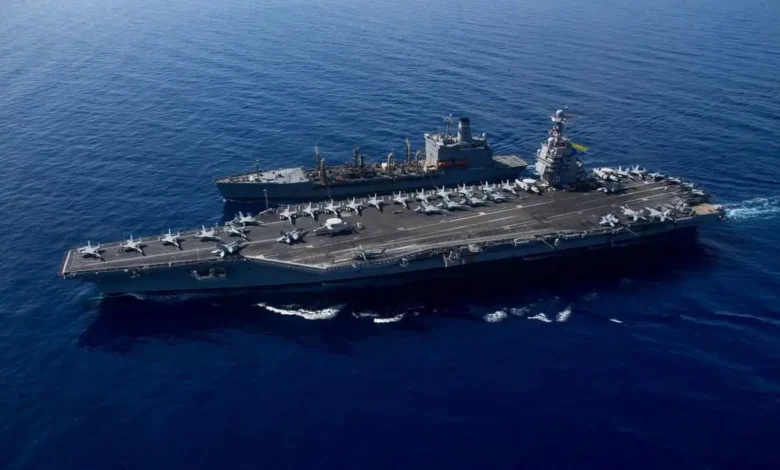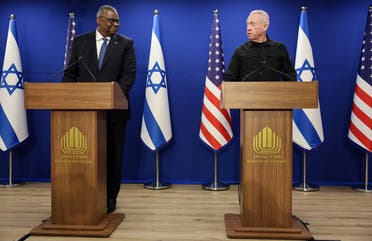US defense secretary visits aircraft carrier at heart of Middle East deterrence

US Defense Secretary Lloyd Austin visited the Gerald R. Ford aircraft carrier in the eastern Mediterranean Sea on Wednesday, and thanked its crew for their role in helping prevent a broader conflict in the Middle East during the Israel-Hamas war.
The nuclear-powered Ford, a small, floating city of more than 4,000 people with eight squadrons of aircraft, became a powerful symbol of American resolve by rushing closer to Israel after it was attacked by the Palestinian militant group Hamas on October 7.
Austin has extended the Ford’s deployment three times, hoping its presence would make Iran and Iran-aligned groups — particularly Lebanon’s Hezbollah — think twice before joining the fight against Israel.
“This carrier and crew are making history. Sometimes our greatest achievements are the bad things that we stop from happening. And at a moment of huge tensions in the region, you all have been the lynchpin to preventing a wider regional conflict,” Austin said, addressing the ship.
How much longer the Ford remains in the eastern Mediterranean is unclear, as is whether it will depart for its home port in Virginia before Israel moves from high-intensity combat in Gaza to a different, more limited phase of the war to dismantle Hamas.
Austin discussed planning for the transition with Israeli leaders on Monday in Tel Aviv, with an international outcry mounting over the high civilian death toll in Gaza.

When Israel might start that transition is unclear, and Austin told reporters in Israel that he was not there to dictate timelines to the close American ally.
Until regional tensions subside, Austin must consider what more the US and its partners can do to deter Iran’s allies in Lebanon, Iraq, Syria and Yemen — all of whom are trying to impose costs on Israel and Washington over the Gaza conflict.
In Iraq and Syria, US troops have endured drone and rocket attacks by Iran-backed militia.
Iran-aligned Houthis in Yemen have disrupted global trade by attacking commercial tankers and container ships in the Red Sea with drones and missiles. US warships have responded so far by shooting them down, and answering distress calls.
Maritime security initiative
On Tuesday, Austin announced the creation of a maritime security initiative to respond to the attacks and convened a meeting of more than 40 defense ministers, calling on them to contribute.
Austin also met senior leaders in Qatar, which helped broker a ceasefire between Israel and Hamas and is one of few countries with an open line of communication to both sides.
US and Israeli officials say the rapid deployment of the Ford and other assets after the outbreak of the Israel-Hamas war sent a critical message to Hezbollah, warning it of the costs of opening a major new front for Israel.
“We could have, I think, found ourselves in a very different situation, had that not happened,” an Israeli military official said, speaking on condition of anonymity.
Even so, experts say tensions along the Israel-Lebanon border are still high and Israel remains concerned about a possible ground incursion in the north.
“A continuing deployment of the Ford and (its) carrier strike group remain critical to limit further escalation,” said Seth Jones at the Center for Strategic and International Studies think tank.
The Ford is the US Navy’s newest aircraft carrier, and it’s vast – with more than 95,000 pounds of mail delivered to it already and more than 3.5 million meals served.
Its air wing has carried out more than 8,000 sorties, more than a quarter of them since repositioning to the eastern Mediterranean Sea after the war in Gaza began.











